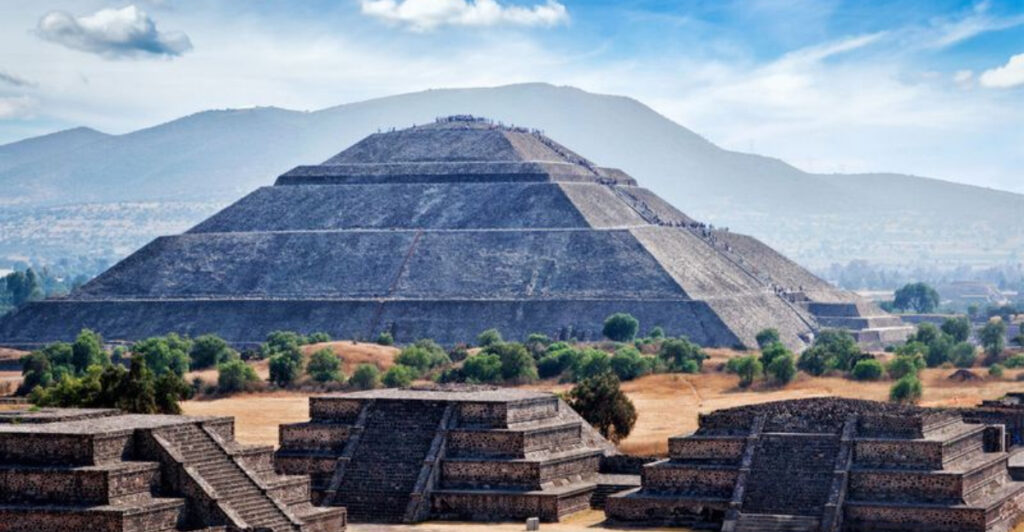Explore the fascinating world of pyramids that exist outside Egypt. From ancient wonders to modern marvels, these structures showcase incredible architectural skills and cultural significance. Discover the stories behind these unique pyramids, each with its own history and charm.
1. Pyramid of Cestius, Italy
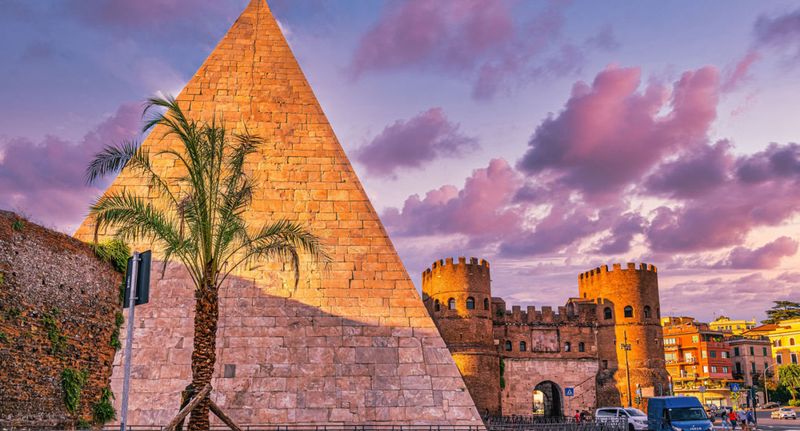
Nestled in the heart of Rome, the Pyramid of Cestius stands as an intriguing blend of Egyptian influence and Roman culture. Constructed around 12 BC, this striking white marble edifice serves as the tomb of Gaius Cestius, a wealthy magistrate and member of a religious corporation. Its sharply pointed structure reflects Egyptian design, yet its presence in Rome signifies a unique cultural fusion. The pyramid is 37 meters tall, epitomizing both grandeur and mystery amidst the ruins of ancient Rome. Today, it remains a testament to the intriguing cross-cultural exchanges of antiquity.
2. Pyramid of the Sun, Mexico
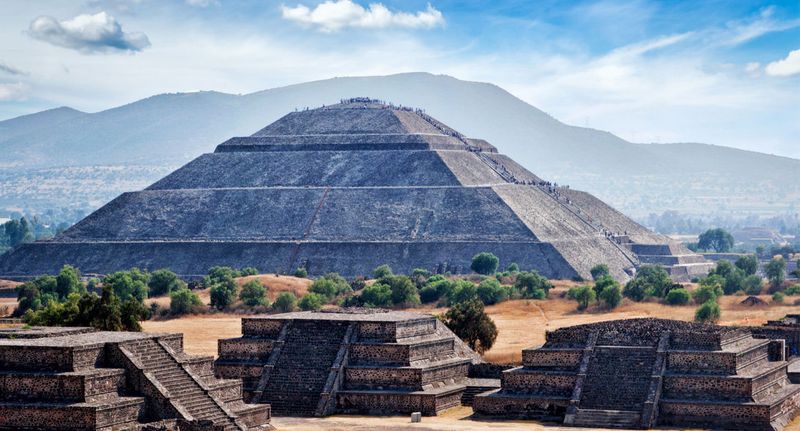
The Pyramid of the Sun, located in the ancient city of Teotihuacan, is a monumental testament to the ingenuity of Mesoamerican builders. Standing 65 meters tall, it is one of the largest pyramids in the world. Constructed around 200 CE, this pyramid was central to the city’s spiritual and political life. Its name, derived from Aztec mythology, speaks to its cultural significance. Climbing its steps offers a breathtaking view of the sprawling ancient city below, a reminder of the rich history that permeates this region of Mexico.
3. The Nubian Pyramids, Sudan
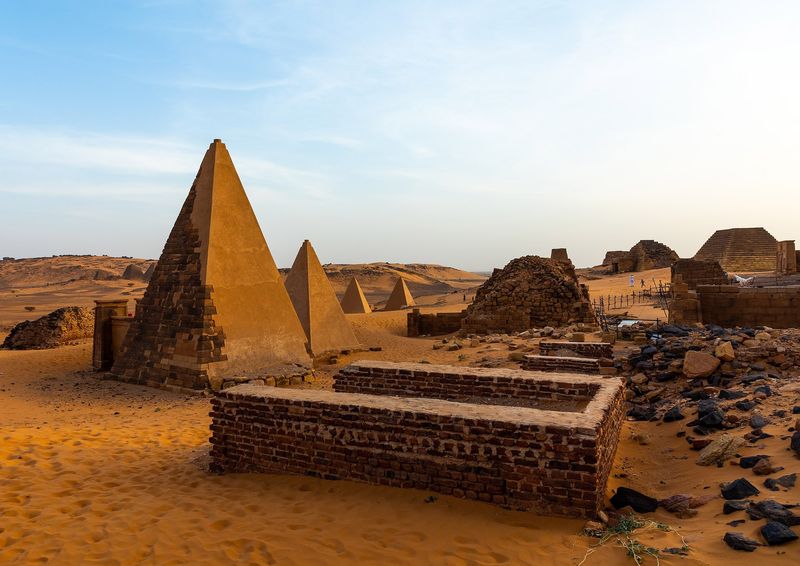
In the arid desert of Sudan lie the Nubian Pyramids, remnants of the ancient Kingdom of Kush. Unlike their Egyptian counterparts, these pyramids are smaller and steeper, yet equally fascinating. They were built as tombs for the kings and queens of Nubia, showcasing the region’s rich cultural legacy. Over 200 pyramids dot the landscape of Meroë, a UNESCO World Heritage site, each telling stories of regal grandeur and historical splendor. The Nubian Pyramids serve as a profound connection to Africa’s vibrant and diverse heritage.
4. Pyramid of the Moon, Mexico
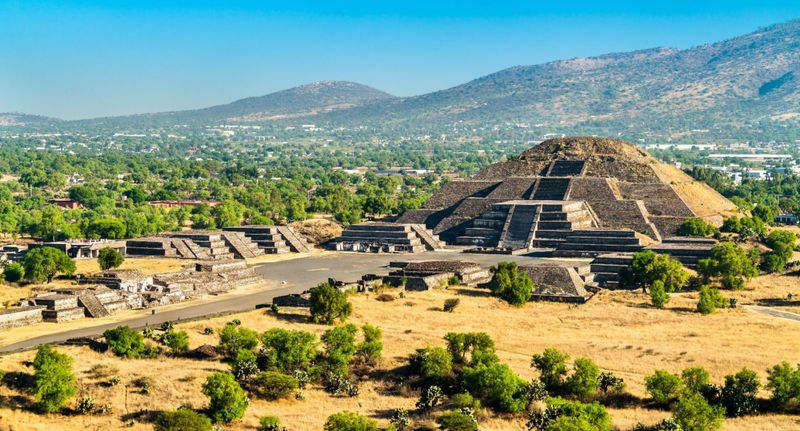
Overlooking the Avenue of the Dead, the Pyramid of the Moon in Teotihuacan is a majestic structure shrouded in mystery. Built between 200 and 450 CE, it served as a ceremonial hub, reflecting the cosmological beliefs of its builders. Its design mirrors the surrounding mountains, creating a harmonious blend with the natural landscape. The pyramid’s commanding presence at the end of the avenue adds to its enigmatic allure. It remains a vital piece of Mesoamerican history, inviting speculation and admiration from visitors worldwide.
5. Pyramid of Djoser, Egypt (Bonus)
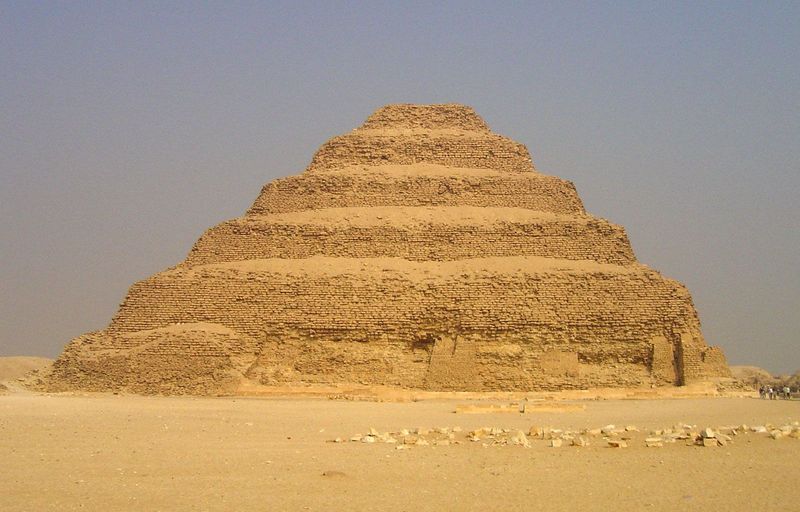
As a bonus, we briefly revisit Egypt with the Step Pyramid of Djoser. Though not outside Egypt, this is a notable mention for its architectural innovation. Built during the 27th century BC, it is the earliest colossal stone building in Egypt. Designed by the architect Imhotep, its step design paved the way for future pyramid construction. It stands as a cornerstone in the evolution of pyramid design, marking a significant leap in architectural techniques. The structure’s historical and cultural importance resonates through time.
6. Pyramid of Austerlitz, Netherlands
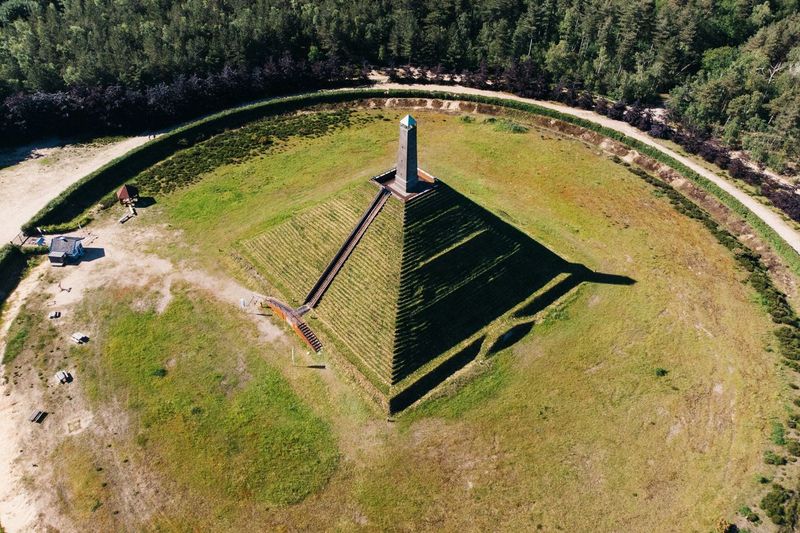
An unexpected gem in the Netherlands, the Pyramid of Austerlitz is a testament to Napoleonic influence in Europe. Constructed in 1804 by Napoleon’s soldiers, this grass-covered mound was inspired by the Great Pyramid of Giza. Topped with an obelisk, it offers panoramic views of the surrounding forested area. Initially intended as a tribute to Napoleon’s victories, it now stands as a unique historical landmark. Its blend of natural beauty and historical significance draws visitors eager to explore this lesser-known pyramid in Europe.
7. El Castillo, Mexico
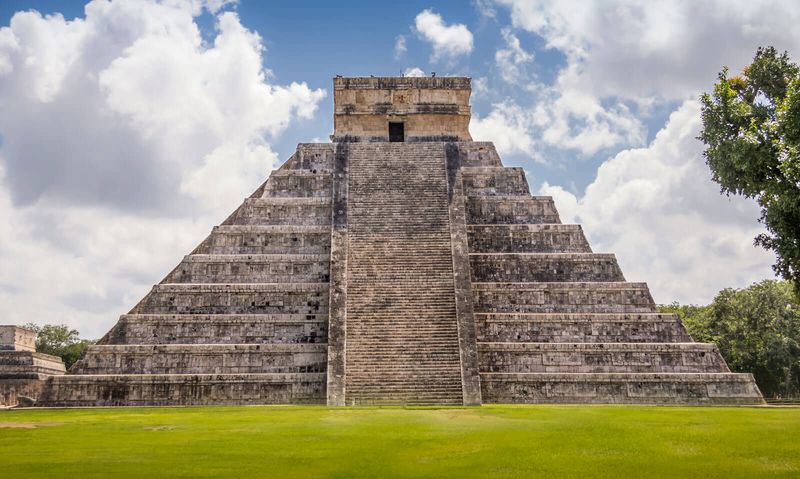
El Castillo, or the Temple of Kukulcán, is a crowning jewel of the ancient Mayan city of Chichen Itza. This iconic stepped pyramid, constructed around the 9th century, embodies the astronomical and architectural prowess of the Mayans. During the equinoxes, a shadow resembling a serpent slithers down its steps, an awe-inspiring testament to the Mayans’ ingenuity. The pyramid’s grand design and celestial alignment make it a profound symbol of Mayan culture, drawing visitors from all corners of the globe to witness its timeless magnificence.
8. The Louvre Pyramid, France
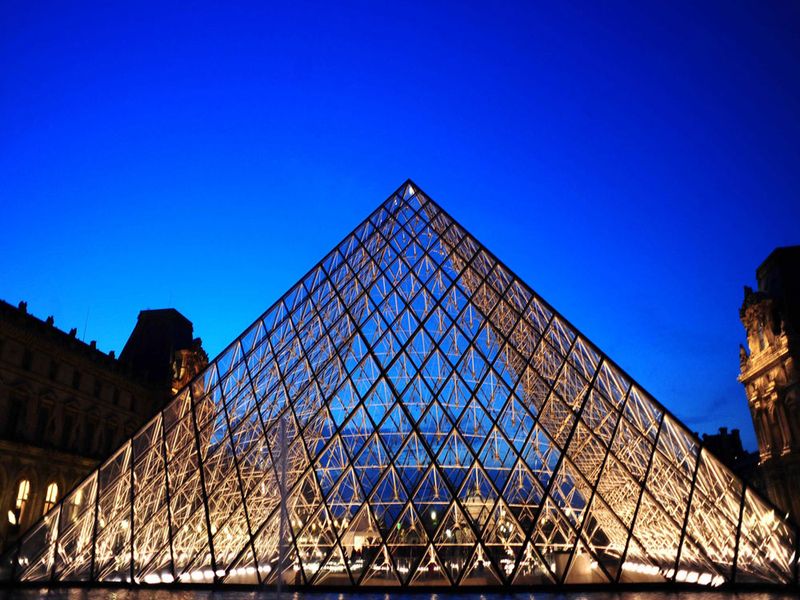
In stark contrast to ancient pyramids, the Louvre Pyramid in Paris represents modern architectural excellence. Designed by architect I. M. Pei, this glass and metal structure serves as the main entrance to the Louvre Museum. Completed in 1989, it stands as a striking juxtaposition against the historic backdrop of the museum’s classical architecture. The pyramid symbolizes a bridge between old and new, drawing art lovers to its entrance. Its transparent design and geometric precision continue to inspire admiration and debate among visitors.
9. Bent Pyramid, Egypt (Bonus)
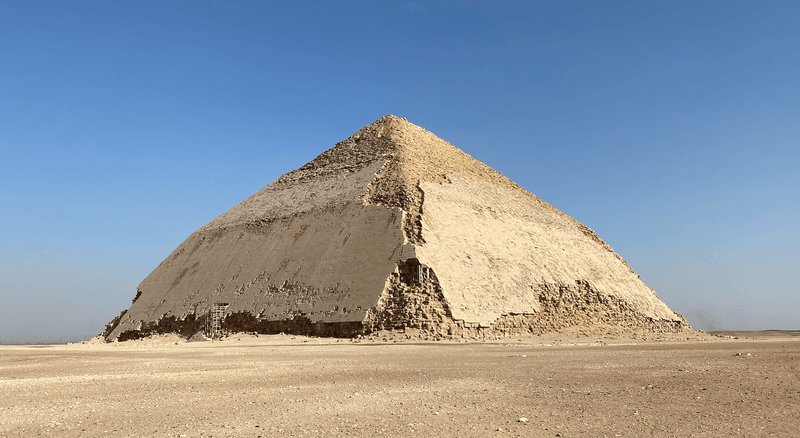
Another Egyptian touch, the Bent Pyramid of Dashur, merits mention for its distinctive shape. Constructed during the reign of Pharaoh Sneferu around 2600 BC, its unusual angle change has intrigued historians. The bent appearance results from changes during construction, reflecting early experimentation in pyramid design. It stands as a witness to the trial-and-error process in ancient architectural practices. While most pyramids have straight sides, its unique form makes it a captivating subject for archaeological study and admiration.
10. Candi Sukuh, Indonesia
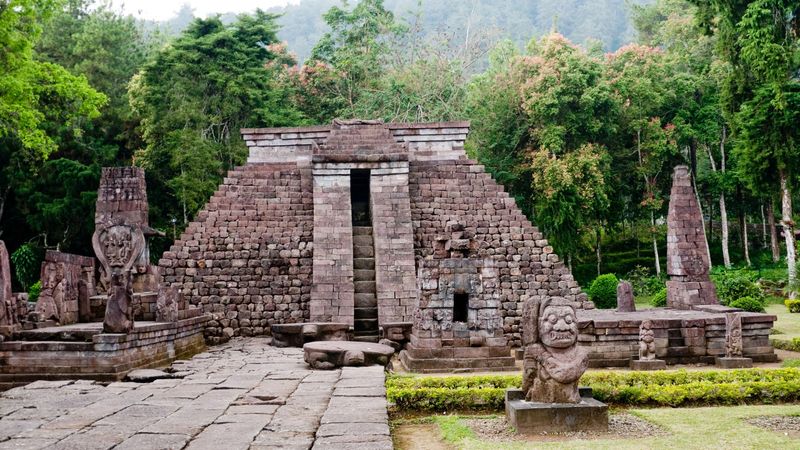
High on the slopes of Mount Lawu in Java, Candi Sukuh stands as an enigmatic, pyramid-shaped temple. Dating back to the 15th century, it is a relic of Java’s Hindu past. The temple’s unconventional design and erotic reliefs have sparked intrigue and speculation. Its pyramid form deviates from traditional Javanese architecture, suggesting influences from diverse cultural streams. This site offers a fascinating glimpse into the spiritual and artistic expressions of its time, attracting historians and tourists alike to its lush, mystical surroundings.
11. Pyramid of Cholula, Mexico
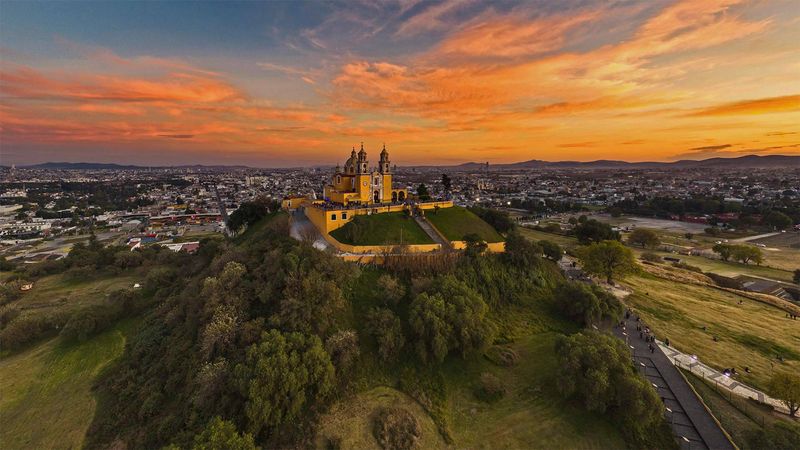
The Pyramid of Cholula, also known as Tlachihualtepetl, is an awe-inspiring architectural wonder. It holds the record as the largest pyramid by volume globally. Built over several generations, it showcases layers of ancient civilizations.
Covered by a lush hill, the pyramid is often mistaken for a natural feature, crowned by a striking church.
Visitors can explore the labyrinth of tunnels that weave beneath its surface, offering a glimpse into its historical significance. Its grandeur is mirrored in its enigmatic aura, making it a site of intrigue and admiration.
12. Pyramid of Hellinikon, Greece
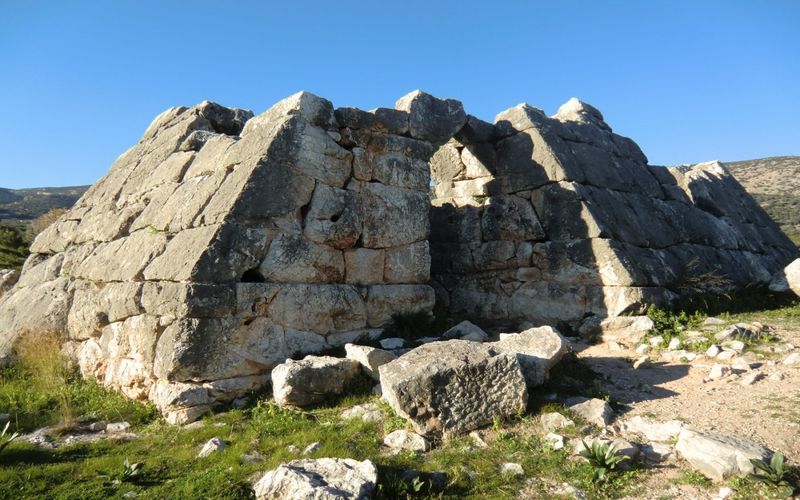
The Pyramid of Hellinikon, located in the Greek landscape, sparks curiosity and debate. Unlike typical pyramids, its structure is smaller and less pronounced but holds historical significance.
Some theories suggest it served as a tomb, while others propose it was a monument or lookout post.
Surrounded by myths, this pyramid continues to attract historians and tourists alike, seeking to uncover its origins and purpose. Its unassuming presence adds a mystique to the verdant Greek countryside.
13. Pyramid of the Niches, Mexico
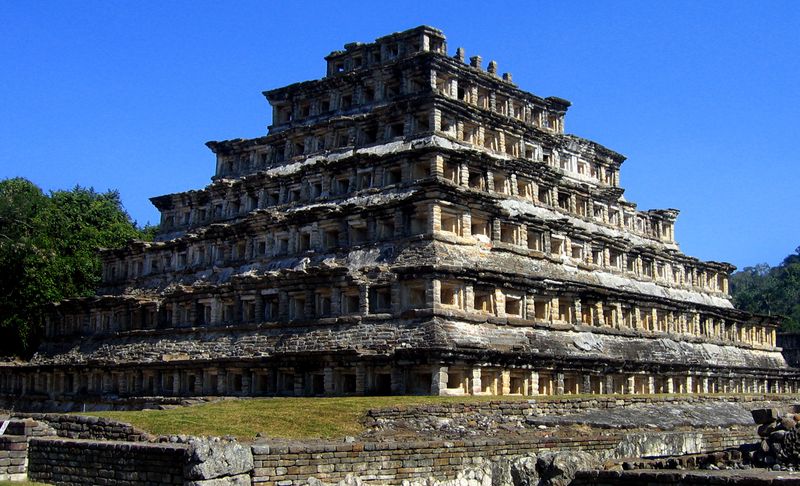
El Tajín’s Pyramid of the Niches stands as an extraordinary feat of pre-Columbian architecture. Known for its 365 niches, it aligns with the solar year, reflecting the advanced understanding of the ancient Totonac people.
Its design reveals astronomical significance and ceremonial purposes. The pyramid is an emblem of El Tajín’s cultural vitality, attracting scholars and tourists.
Its detailed craftsmanship and strategic alignment make it a remarkable testament to the sophisticated engineering of its time, offering insight into the spiritual and societal structure of its builders.
14. Pyramid of Karle, India
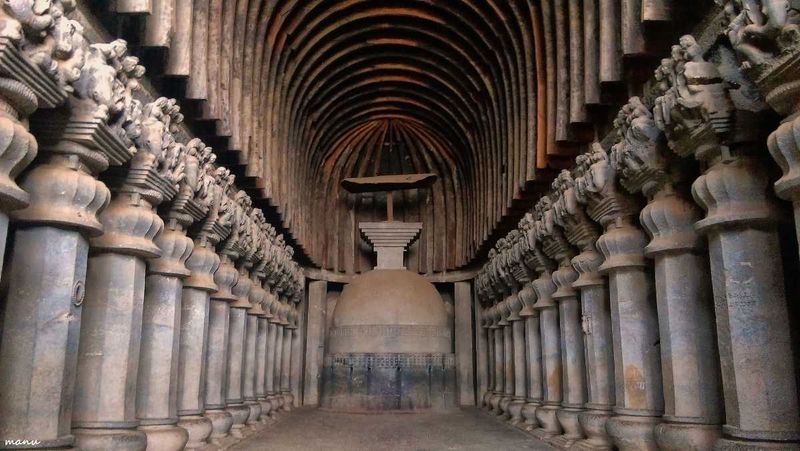
The Pyramid of Karle in India is not a pyramid in the traditional sense but a Buddhist rock-cut cave complex. Its majestic façade and intricate interiors resemble pyramid-like structures, showcasing ancient Indian craftsmanship.
This site served as a hub for Buddhist monks, offering refuge and a place for meditation. The carvings on the walls depict scenes from Buddhist mythology.
Nestled in the Sahyadri mountains, Karle’s architectural grandeur and spiritual aura make it a significant site for cultural and historical exploration.
15. Pyramid of Paestum, Italy
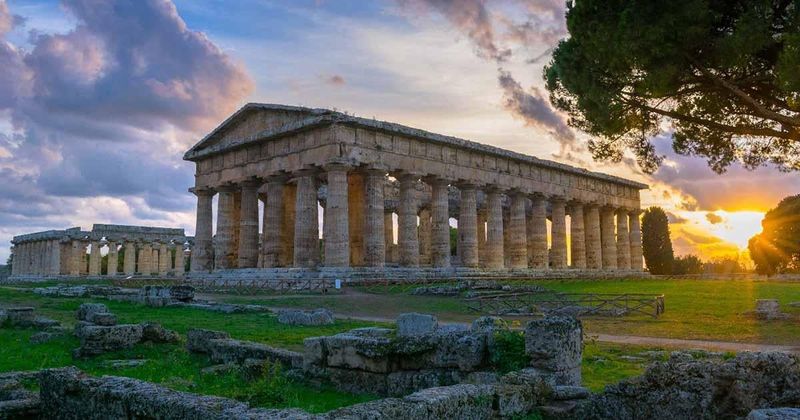
Paestum’s pyramid is an architectural gem in southern Italy. Although overshadowed by its Greek temples, it offers insight into the region’s eclectic historical influences.
The pyramid, not as towering as others, reflects a blend of Greek and local Italic styles, capturing a unique historical fusion.
Visitors to this site can witness the intricate stonework and explore the surrounding ruins that tell tales of ancient settlers. Its understated elegance and historical significance make it a fascinating destination for history enthusiasts.

